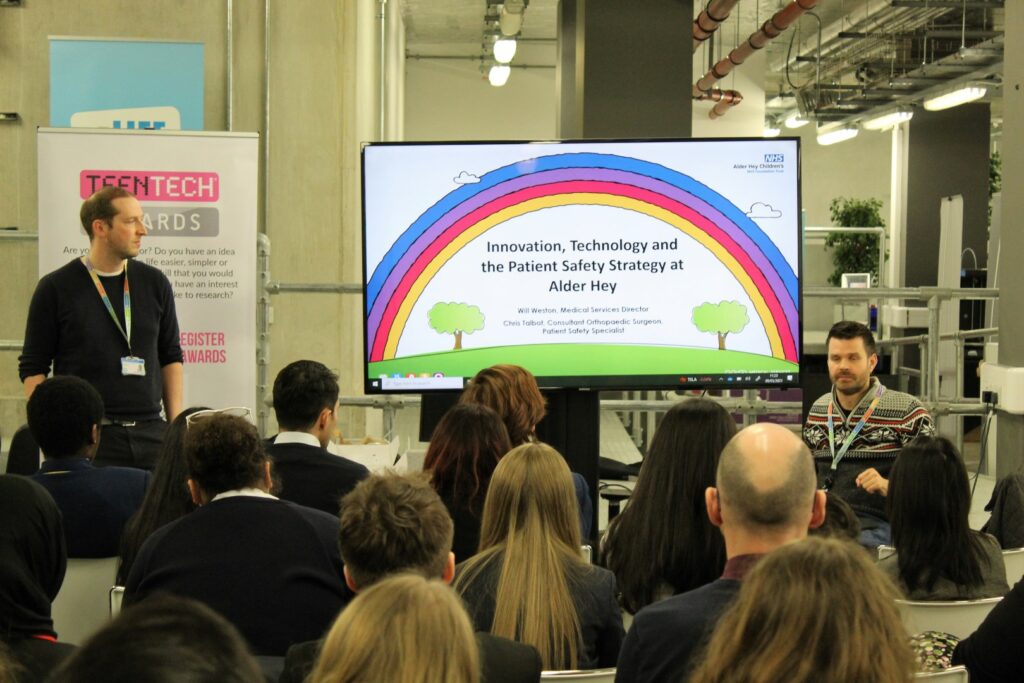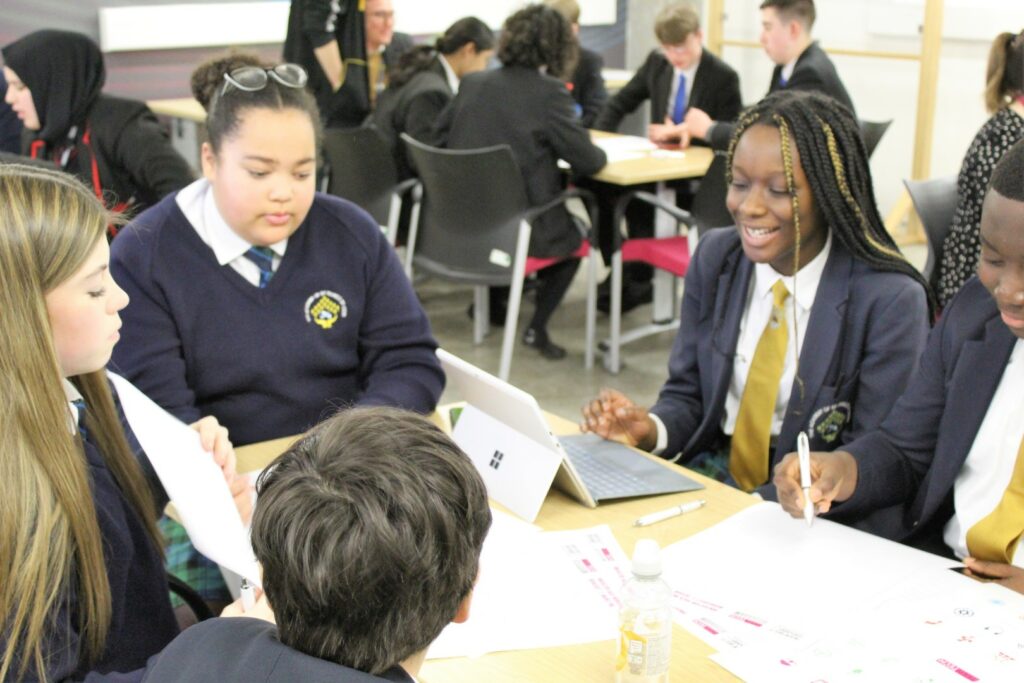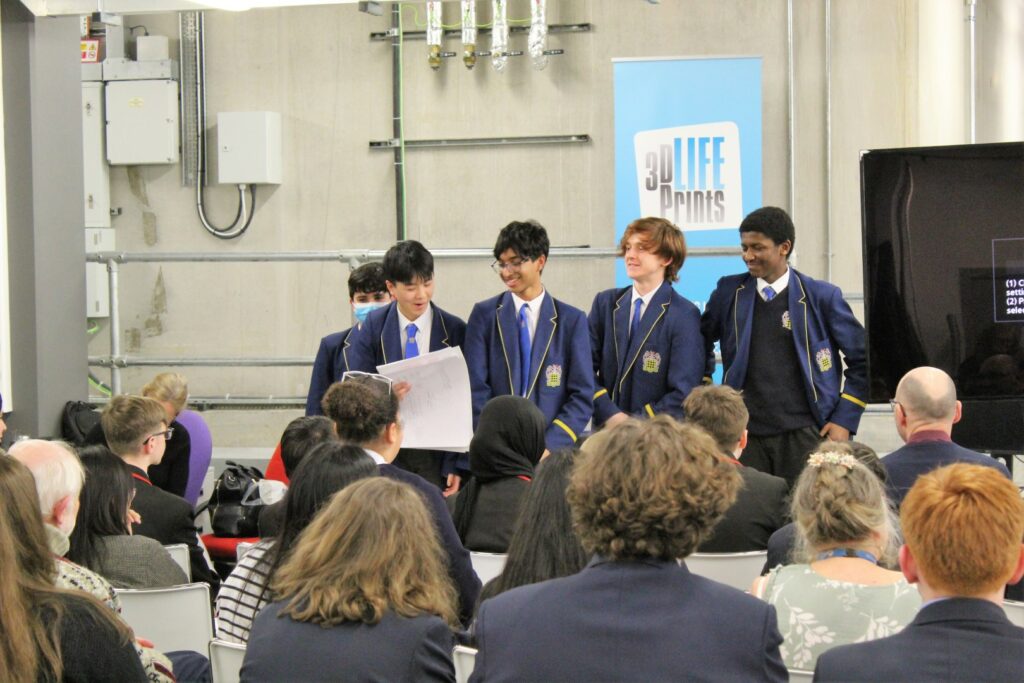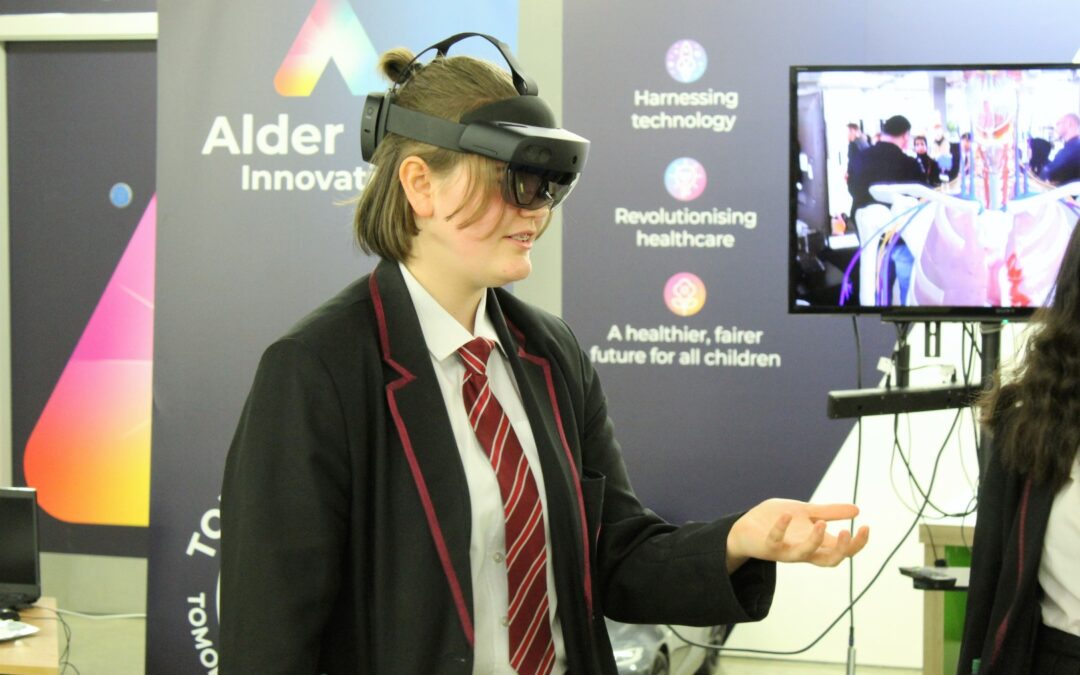
35 years ago, I stepped through the doors of Alder Hey Children’s Hospital – then a rambling Victorian building with a central corridor over half a mile long – as a reporter on Hospital Watch. It made a deep impression, particularly as I was seven months pregnant with my daughter Rose.
Last week I returned, this time with #TeenTech students working on a global project to improve patient safety. In a poignant way, Rose has just had her first baby, and the old Alder Hey has been replaced by a state-of-the-art hospital which marries the very latest technology, innovative thinking and thoughtfulness for children.
Stepping into the central atrium, a hundred individually created birds and characters are suspended above your head, inspired by the wildlife of the Wirral and Formby. It is unlike any hospital environment. Even the signage reflects the nature theme.
Iain Hennessey (Clinical Director of Innovation) and Wendy Blumenow (Senior Clinical Innovation Consultant) gave me a tour, explaining details which make a difference to both surgical outcomes and emotional experiences.
Research shows young people feel intimidated by long imposing corridors, so (with some moaning from builders, I am sure) all walls leading into wards are curved, keeping the design to an intimate human scale. Doors to individual rooms were specifically designed to be easily opened by a child.
One of the practical innovations developed by Wendy during the pandemic were see-through masks.
‘I’m a speech therapist so they were especially important for the young people I was working with. The challenge was to develop masks which kept faces visible whilst making sure they worked in terms of preventing the spread of Covid’
The suite of operating theatres not only incorporates the very latest technology but important details to reduce patient anxiety.
The flow from arrival to recovery is carefully structured so no child sees another emerging unconscious from surgery.
Iain explained that if they are operating on a brain tumour, after the child is anaesthetised and then scanned by MRI, the surgeon and radiologist review the results and mark the area for surgery on the image. The child then moves straight into the adjoining operating theatre, where they remove the tumour. Cameras capture images which go straight into the child’s medical notes. The child is then quickly moved back into the MRI room to double-check check everything has been removed. This makes a significant difference to the need to re-operate.
And the tour would not be complete without a quick demonstration of an Alder Hey secret ingredient – a bubble machine – ‘It works with children of all ages”
Then it was back down to the impressive Alder Hey Innovation Centre where our teenagers were keen to share and develop their own ideas.
Medical Services Director, Will Weston and Consultant Orthopaedic Surgeon Chris Talbot showed the importance of patient safety, and the difference 3D makes to orthopaedic surgery.

The Alder Hey team joined volunteers from Microsoft and BlackMarble to demonstrate how AI, Virtual Reality, Augmented Reality and robotics are already being used in innovative projects across the hospital. The teenagers then worked alongside tech experts to see how technology could be incorporated into their TeenTech Award projects covering different areas of patient safety.


It was a powerful and inspiring way for young people to see how many career opportunities are opening across health tech.
And finally, you can imagine how wonderful it was to hear someone recently interviewed about a position at Alder Hey. When asked about what attracted them there said, “Well, many years ago I saw a BBC programme called Hospital Watch”….

